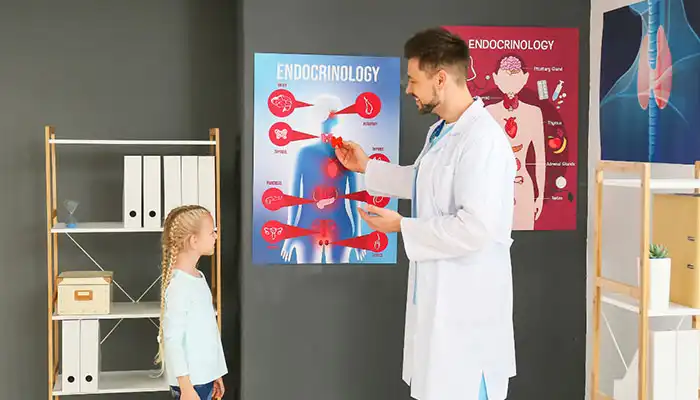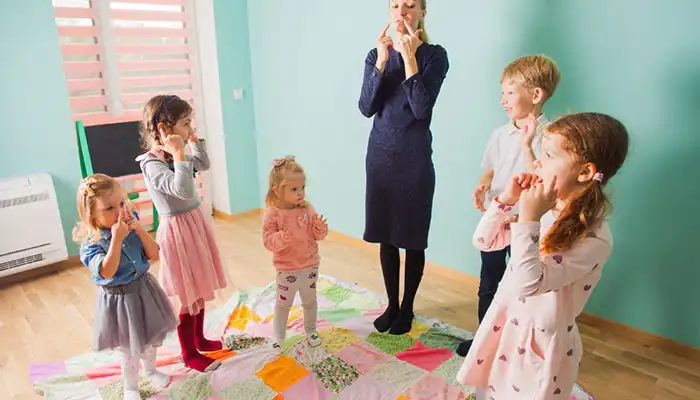Printable Body Parts Labeling Activity for Preschoolers
A good rule of thumb when you’re working with preschoolers is to focus on the fundamentals. And for preschool children, nothing is more basic than learning about their bodies. Printable Body Parts Labeling Activities for Preschoolers are a great way to have fun while learning!
Why Teaching Body Parts is Essential
After all, knowing that your head is at the top and your toes at the bottom is one of those pivotal facts of life you might want to disseminate to your tyke. For preschoolers, however, learning body parts is about more than naming the nose. It’s vital for their development, and it helps them with key linguistic, cognitive and even social skills such as self-awareness and boosting confidence.
For instance, imagine a child who knows the words for his body parts: that way, if his tummy hurts, he can say: ‘My tummy hurts.’ Learning to be ‘in charge’ of his body can help him feel more effective.
But it’s not just about the act of communicating. Understanding terms for body parts is also about their cognitive development, about understanding the distinction between you and me – and that is, of course, a big deal at this age. It’s also a stepping stone for more advanced learning in the future, such as how the body works.

How to Use Printable Body Parts Labeling Activities
Now that we’ve taken a closer look at why it’s important, let us delve into the different ways that you can use these labeling activities. First these printables so great is that they can be are a parent or a teacher, you can customize what you need from these printables.
- Start Small: Start small. Have your child use printables based on basic anatomy – in other words, printables on the parts of someone’s head and body. After setting up the worksheet, have the child point at and label each body part as you say them.
- Getting interactive: Make it a game. Ask: ‘Where’s your elbow?’ ‘What is this used for?’ Then, match the word to the picture on the worksheet.
- Repeat: This increases repetitions, fixing the learning into your brain. The more you practise, the better you will get. You can do this by including these activities in your daily life.
- Get on Their Level: Use a mirror. Have the kids use a mirror as they’re naming the parts on the worksheet – you can see them making the connection to their own embodiment
- Reward Them: Praise them whenever they get it right. And they will be correcting you often, so be thankful (it’s a great approach in relationships, no less). But also gently correct them when they get it wrong.
Integrating Body Parts Activities into Daily Routine
Also, it’s one of the best subjects to weave into daily routines and tasks without sacrificing the creative outlet of staying ridged to a specific activity time or play space.
- Morning Routine:Getting dressed is a perfect time to name body parts as clothes are added. ‘What part of the body does your shirt cover?’ Simple questions of this kind can keep the learning going without sounding like work.
- Bath time: Another great opportunity. Wash each section and call out each body part as you go. ‘What are we washing now? Your belly! Right! That’s a belly.
- Play: Use a favourite toy or doll. Point to the doll’s nose, ears, or feet and ask your child to do the same. Then, have them point to those parts on their own body.
- Bedtime Stories: Select books that focus on body parts so that, as you read, you can pause and ask your child to raise her hand with her head, hand, finger, etc.
By doing this every day, you’re literally cementing these behaviours into their precious little brains, but more importantly, it’s just really fun for the two of you.
Where to Find High-Quality Printable Resources
So, when you’re searching for quality printable body parts with captions activities, you should keep an eye out for resources that not only help you learn but also keep you interested:
*Expandable ‘Personal Workspace’: Here’s a weekly planner designed with a frame that you can enlarge to cover your entire desk. *Lesson Plans: On every Teachers Pay Teachers, Twinkl and Scholastic blog, you’ll find hundreds of other printables. Created by teachers themselves! You can be sure they’re reliable.
- Pinterest: As unlikely as it seems, Pinterest is full of freebies. Type in ‘body parts labelling worksheets’ and you’ll see what I mean.
Early Centres: Most local early childhood centres can offer free downloadable resources. These tend to sync with their teaching approaches, so they’re ideal for reinforcing what your preschooler is learning there.
- DIY Printables: You can get crafty and make your own printables. Sites such as printables.com provide free templates that you can customise so that the worksheets fit to the level of your child.
Regardless of where you find your sheet funnels, ensure that it’s colourful and age-appropriate. The more vibrant and fun, the better!
Encouraging Interactive Learning at Home
Learning is interactive, and that’s the key here! While worksheet exercises are useful to a degree, we all learn better through fun and practical activities. Here are some tips for incorporating interactive learning at home:
- Use a Mirror: Let them look at themselves as they name parts of their body. Seeing themselves reinforces what they are learning.
- Use Technology: A variety of apps and online games involve naming body parts. They can be a fun way to break up the routine.
- Role Play: Turn learning into a role-playing game. Ask your kid to pretend to be doctors. Have your kid ask you which body part needs to be ‘fixed’; and practice putting on bandages and binding. All of these fun interactions will help further entrench learning.
- Group Activities: If you have more than one child, or if you’re working with a group, turn it into a group activity. Have them take turns labelling body parts on each other. Such social learning can be very powerful.
- Hands-on activities: Clearly, sometimes the best learning happens off of the worksheet. Get out some playdough and let your child sculpt different parts and use a sensory bin to hide labels and have them what labels go to what part.
In making the process learner-driven and interactive, you’re teaching your child more than just the names of the body parts. You’re instructing your child in their function and how they relate to the larger functioning body of which they are a part.
Bringing It All Together
While it may seem like just another lesson plan, reminding preschoolers that they have body parts and parts that are best kept covered allows parents and teachers to pass along knowledge that will become a cornerstone for a lifetime of safe, confident sexuality. Printable body parts labelling worksheets for preschoolers are an invaluable tool that can make this education more accessible, more fun and far more effective.
If you plug these activities into your daily schedule, learn together hand-in-hand (or fingers-side-by-side, as it were) and invest in good resources, your child will be able to identify where their nose is not only in theory, but also have the confidence to talk about their own body.
Thus’s work as task-oriented preschoolers and make learning more fun – more body-like! – and build a solid foundation of knowledge around the human body that can be used as a starting point for further inquiry and exploration. There is no better time than now. There is no better way than play.
Just keep in mind, printable body parts labelling worksheets for kindergarteners aren’t ‘worksheets’ at all – they’re the bricks and mortar of your child’s knowledge about themselves and the world in which they live.
Making the Most of Printable Body Parts Labeling Activities for Preschoolers
Simplicity and engagement are key to teaching preschoolers, and these printable body parts labeling activities for preschoolers do both easily and beautifully.
Building a Routine Around Body Parts Labeling
Keep consistency in mind, which is your best ally while teaching preschoolers. It’s easy to insert body parts labelling into your daily routine. For example, put on your child’s clothes, asking them to point to the eyes, ears and nose. It’s a small thing, but the daily reminder will reinforce the learning. So, a preschool body parts printable labelling worksheet won’t just be a rare activity, it’ll become a regular ritual.
Incorporating Play into Learning
The best way for children to learn something is by playing, so why not turn the labeling of body parts into a game, using the flash cards you can create using the printable sheets. Just shuffle the cards, say: OK son/ daughter, pick a card, point to that body part. Keep it simple, keep it fun, and keep it effective.
FAQs About Body Parts Labeling for Preschoolers
Q: How often should I use printable body parts labeling activities with my child?
A: Training every day is best but just a couple of times a week can make a difference to their studies. Consistency is key.
Q: Can these activities be used in group settings like preschools?
A: Yes, definitely! And the printables are great for implementing a preschool-level body parts activity with a group. For example, children can play a body parts guessing game, where one child wears the label and the others have to figure out which body part is being pointed to.
Q: What age is best to start teaching body parts with printables?
A: It’s good to start as young as you can, with two-year-olds generally being a great place to start. Children are curious about their own bodies, and these activities help them answer some of those questions while teaching some crucial vocabulary.

Advanced Tips for Using Body Parts Labeling Activities
To take your child’s learning to the next level, consider these tips:
- Expand her vocabulary: When she’s ready for details beyond eyes, ears, mouth, eventually move on to elbows, ankles, wrists, and so on.
- Employ Multisensory Learning: Integrate multiple senses into teaching. When teaching the nose, smell something pleasant.
- Pair With Other Activities: send your preschooler to preschool with his label located directly underneath his own label so he can practise identifying body parts while doing other learning activities, like reading books and singing songs about how to take care of his body.
Printable Activities as a Gateway to Broader Learning
The beauty of printable body parts worksheet for preschooler is that it opens up to more educational processes: once your preschooler knows the name of their body parts, it’s easier for you to teach them their functions. Ask something like: ‘What is eyes for?’ Or: ‘Why do we wash the hands?’
Not only does it help to deepen children’s knowledge but it also stands them in good stead for further learning later on. We hope this helps to make these activities a gateway to a lifelong passion.
FAQs: Addressing Common Concerns
Q: My child of 3-5 years is bored with the same things over and over. What can I do to keep it new? A: Blow bubbles. You will have quite a show.
A: Mix up the activities. Use the same printables but offer them up in different ways. On one day, use them with flashcards; on another day, make it into a hunt around the house.
Q: How do I know if my child is actually learning?
A: If they start naming body parts during other moments of their life, outside of the learning sessions, or if they can correct themselves when they make a mistake, this is a pretty good confirmation that they’ve really taken it in.
The Importance of Parental Involvement
Another thing you can do to make learning printable body parts labeling activities for preschoolers a worthwhile experience is to be involved in learning with your child. Printable body parts labeling activities for preschoolers is most effective this way, because your children identify learning with you. With your help, your child will see you working alongside them in the learning process.
This doesn’t have to be you going all-in on these activities for 30 minutes a day. Ten minutes a day can make a difference. You’re teaching your child through your actions that you find joy in this activity. Be excited about it, and likely she’ll be excited too.
Wrapping It Up: The Endless Benefits of Printable Activities
In short, printable body parts activities for preschoolers are a great resource for early childhood education. It is simple, easy to use and it can be shared at home, at school and on the go.
If you do these activities with your child, make them interactive, and stay tuned in, you’re building her body knowledge for a lifetime of learning. Indeed, the early lessons about having a body, along with the list of body parts, provide a powerful foundation for what it means to take care of one’s body in the broader scheme of healthy living.
So as you and your child continue to engage in these activities together, remember that you are not just teaching her a few words here and there, but instead helping her make sense of herself and the world around her.
And there you have it – everything that you need to get the most out of preschooler body parts labeling activities using fun printables… so, what are you waiting for? Download those printables, and get started on this fun educational activity with your kid right away!



